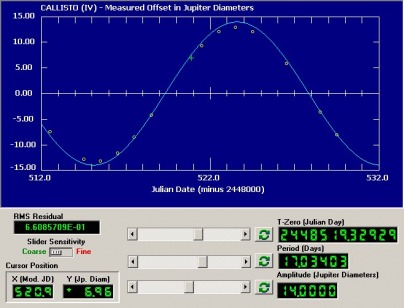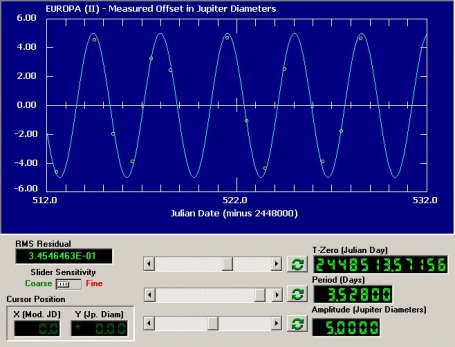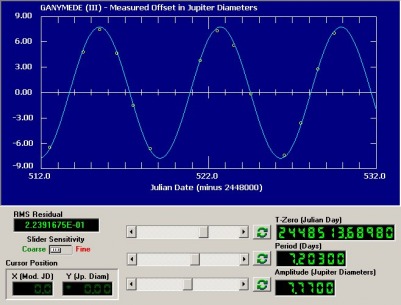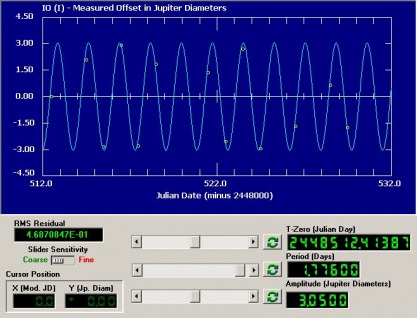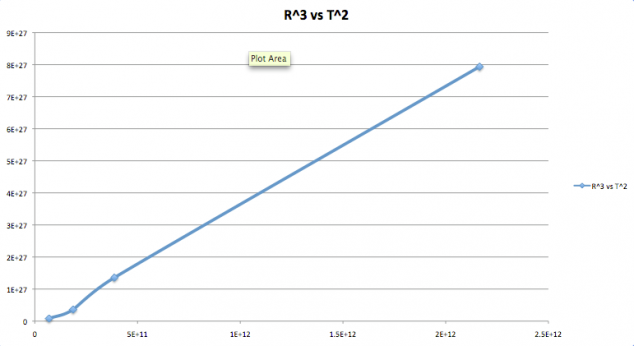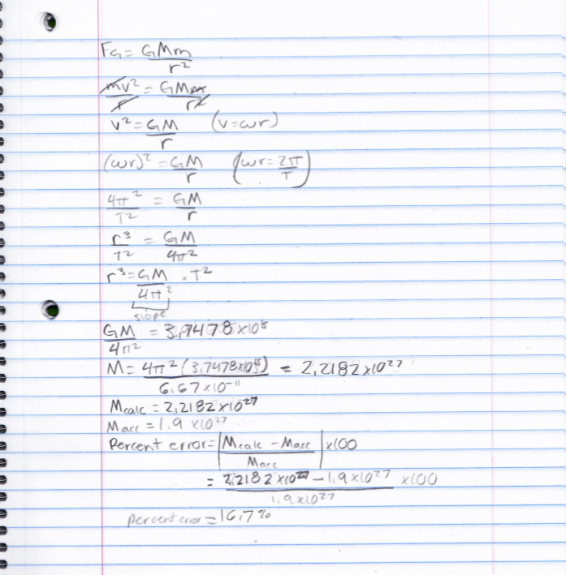Objectives: To determine the mass of Jupiter, gain a deeper understanding of Kepler’s laws, and learn how to gather and analyze astronomical data.
Background: Copernicus began with his heliocentric view of the universe after many years of research. After Copernicus there was Brahe, who observed the position of stars over an extended amount of time. Brahe’s student Kepler developed three mathematical laws to explain the movement of the planets. Newton expanded Kepler’s law by using his own law of universal gravitation.
Procedure:
Geddes, K. (2010). Moons of jupiter. Retrieved from
http://geddesphysics.weebly.com/moons-of-jupiter.html
Data:
Background: Copernicus began with his heliocentric view of the universe after many years of research. After Copernicus there was Brahe, who observed the position of stars over an extended amount of time. Brahe’s student Kepler developed three mathematical laws to explain the movement of the planets. Newton expanded Kepler’s law by using his own law of universal gravitation.
Procedure:
Geddes, K. (2010). Moons of jupiter. Retrieved from
http://geddesphysics.weebly.com/moons-of-jupiter.html
Data:
| jupsatdata1_version_1.xls |
Data Analysis:
1. The percent error was found to be 16.7%
2. They will have larger periods than Callisto because they are farther away from Jupiter.
3. The "r" value, because the "r" value has a larger effect on the "t" values than the "t" on the "r".
4. By proving that moons orbit planets, it was not a far stretch to say that planets orbit the sun.
2. They will have larger periods than Callisto because they are farther away from Jupiter.
3. The "r" value, because the "r" value has a larger effect on the "t" values than the "t" on the "r".
4. By proving that moons orbit planets, it was not a far stretch to say that planets orbit the sun.
